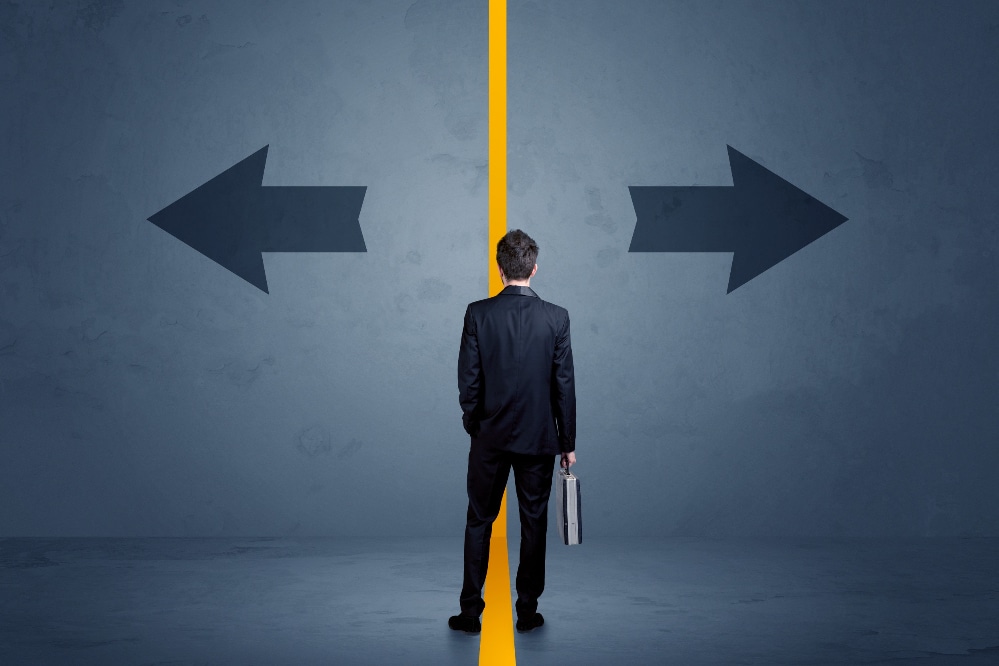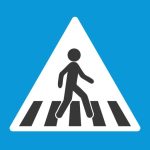Will You or Won’t You: The Biased Choice Model of Addiction

We have been following along in Dr. Reinout W. Wiers forthcoming book, A New Approach to Addiction: Akrasia and the Nature of Free Will (Routledge, 2025). We first looked at the model of addiction as a cognitive brain disease, and followed with a post on why addiction is not a chronic brain disease. Today, we will cover Dr. Wiers’ preferred “biased choice” model of addiction.
Dr. Wiers is head of the Addiction Development and Psychopathology Lab at the University of Amsterdam. A good way of trying to understand what’s happening in the brain comes from the YouTube channel, Amsterdam Live. This channel broadcasts a livecam focused on a “crazy” intersection where a bicycle path crosses a busy road and everyone is forced to make very quick decisions. Importantly, the vehicles on the road are not required to stop for the bicycles or pedestrians attempting to cross.
As you come up on your bicycle to the intersection, you face six lanes of traffic with no stop sign or signal. In the center lanes are transit trams zipping along in both directions. They are flanked by the car lanes, going in opposite directions on each side of the trams. Finally, there are bicycle lanes, packed nearly four-across in rush hour with grandmothers, service industry workers, tour-de-francers, baby carriages, delivery carts, plus novices. Finally, add the motorcyclists and e-bike riders who weave in and out between car and bike lanes depending on traffic.
As you come to the intersection on your bike, you must decide: Should I get off the bike and wait or stay on the bike and look for an opening to get across? It is a small decision, but it is a potentially life-threatening one. Certainly, the first time approaching the crazy intersection, all your logic and instincts would align to get off the bike and wait for a big gap in traffic.
What happens, though, after you’ve been through the crazy intersection 10 times, and you notice that more than half the bike riders never dismount? Now you’re under a little social pressure to be less cautious. Maybe a couple of times you dismount, and the quick-thinking riders behind you whiz by and away they go while you stand with your bike and wait for another break.
Maybe after a hundred times, you have learned the likely traffic patterns and approach the crazy intersection with a fairly solid grid of expectations and tolerances. You slow down, look right, look left, and plow through behind the tram. You didn’t see the car broken down in the right lane and the upcoming driver didn’t see you. Horns sound as you come inches from death. You were willing to risk your entire life, your future, and your family’s future, to save a few seconds dismounting your bike. Do you dismount the next time?
That is what the brain is like, according to Dr. Wiers:
The brain is viewed as a Bayesian prediction machine that continuously makes best guesses of what caused the current pattern of sensory input, and it can simulate the expected effects of actions… [W]e continuously make models of the world in order to better predict what is going to happen and how we can best act given the (changing) circumstances.
As with previous chapters, Dr. Wiers goes researcher-by-researcher in making his case for biased choice. He starts with Paul Verschure, project leader at the Donders Institute for Brain, Cognition and Behaviour, who worked on his postdoc with Nobel laureate, Gerald M. Edleman. Their work in distributed adaptive control (DAC) showed that both the brain and the immune system are in part self-organizing based on environment and experience and not just genetics.
This theory of the brain helps explain why people who grow up in poor or otherwise traumatic environments tend to make poor choices regarding eating habits, smoking, vaping, and substance use issues. When good choices are not available, bad choices can become, over time, the preferred choice, even when better choices do become available. “[Early] experiences and environmental influences sculpt the brain processes that lead to later choice,” writes Dr. Wiers.
In general, people who lack self-control or are impulsive are drawn more to substance abuse. It is difficult to say how much genetics affects the lack of self-control or how much self-control can be trained or repaired. The issue of strengthening self-control is contained in a later chapter of Dr. Wiers’ book and will be a subject for a future post on AddictionNews.
The next researcher is Karl Friston, who showed that it is costly to fail to make a timely decision. The brain would prefer to predict the likely outcome rather than wait to be a victim of it. So it tags every possible outcome with a likelihood of happening and weights the outcomes by the relative pleasure they will generate or pain they will relieve, then it throws a switch in the prefrontal cortex and the decision is made.
When the brain predicts the outcome rather than waiting for it to happen, it makes several assumptions that might be considered cognitive mistakes. Behavioral economists, such as Daniel Kahneman, talk about a two-tier system of fast, emotional, impulsive thinking versus slow, rational analysis. Dr. Wiers cites the work of economist Todd Hare, who has measured the changes in the prefrontal cortex during decision-making.
There is a circuit in there, according to Dr. Hare and Dr. Wiels, where all the inputs are added up, a threshold is reached, and a decision is made. All of this is strikingly similar to Dr. Robert A. Pretlow’s Unified Theory of Addiction, where both behavioral and substance use disorders are based on a buildup of stressful discomfort that is relieved (displaced) through indulgence.
Dr. Wiers refers to the “inner struggle” where conflicts arise “when two different [brain] modules suggest opposing trends of action.” He cites as an example the Nordic tradition of jumping into icy cold waters even though the body is signaling: get out now before it’s too late. Dr. Wiers writes:
Why would we do this? In all cases, we must have a strong motivation, for example, the idea that our action will increase our social status among peers.
The conscious mind can suppress even the most primal of urges. Biased choice says that addictive behaviors are “strongly habitual” but not chronically destructive. They can be changed by increasing the attractiveness of alternatives at the moment a decision is made. Once again, this is very similar to Dr. Pretlow’s work on the BrainWeighve app, which curbs overeating by providing more attractive alternatives in the moment of need.
Dr. Wiers elegantly explains the hold of learned signals on the predictive mind:
Reactions to learned signals of reward are the reason why the decision making of a person is not only about rationally weighing of pros and cons of expected outcomes of possible choices: instead these signals of reward can act to bias attention and decision making toward the easy fix.
Salient reward signals in the moment have the advantage of time over slower, goal-directed behavior. That’s why one way of making better decisions in general is to take more time with them. Dr. Wiers is hopeful:
[R]esearch has shown that it is often possible NOT to give into temptation, even when exhausted, as long as you focus on your goals and attractive aspects of the alternative.
In a future edition of AddictionNews, we will look at “training techniques to reduce the salience of reward signals,” in the words of Dr. Wiers. I look forward to it.
Written by Steve O’Keefe. First published September 5, 2024.
Sources:
A New Approach to Addiction and Choice: Akrasia and the Nature of Free Will, by Reinout W. Wiers, to be published by Routledge in 2025.
“The free-energy principle: a unified brain theory?” Nature Reviews Neuroscience, January 2010.
“Self-Control in Decision-Making Involves Modulation of the vmPFC Valuation System,” Science, May 2009.
Image Copyright: ra2studio.




